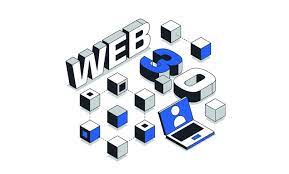The journey from the static pages of Web 1.0 to the interactive and social media-driven Web 2.0 has been transformative. Web 3.0, often associated with the term “Semantic Web,” is poised to build upon this foundation by integrating machine understanding of data, enabling a web that not only knows information but also understands it.
The Pillars of Web 3.0
Decentralization: At the heart of Web 3.0 is the move away from centralized data storage and processing, aiming to distribute data across multiple nodes to enhance security, privacy, and control.
Blockchain Technology: Blockchain and related technologies are crucial for creating a trustless, transparent, and secure environment for transactions and interactions.
Semantic Web: Leveraging AI and machine learning to understand and interpret the meaning of data, www.링크모음여기여.com the Semantic Web allows for more nuanced and intelligent responses to user queries.
Interoperability: A key feature of Web 3.0 is the seamless interaction among various applications and devices, enabling a more cohesive and integrated user experience.
Transforming User Experience
Web 3.0 promises to offer a personalized and context-aware browsing experience. By understanding user preferences and behaviors, it can tailor content, recommendations, and services to each individual, making the web more relevant and useful.
Impact on Digital Identity and Privacy
With Web 3.0, users will gain unprecedented control over their digital identities and data. Through decentralized identity systems, individuals can choose what information to share, with whom, and under what circumstances, enhancing privacy and security online.
The Role of Artificial Intelligence and Machine Learning
AI and machine learning are the driving forces behind Web 3.0’s ability to process and understand vast amounts of data. These technologies enable the web to learn from interactions, improving its accuracy and relevance over time.
Challenges and Considerations
While Web 3.0 holds immense promise, it also presents challenges such as ensuring data accuracy, protecting against malicious use of AI, and achieving widespread adoption and interoperability among diverse systems and standards.
The Future of Web 3.0
The future of Web 3.0 is not just about technological advancements but also about reimagining the web as a more democratic and user-centric platform. It envisions a world where users have sovereignty over their data, interactions are seamlessly integrated across the digital and physical realms, and the web operates as a decentralized network with open standards and protocols.
Conclusion
Web 3.0 is set to usher in a new era of the internet, characterized by greater connectivity, intelligence, and openness. As we stand on the brink of this transformation, it’s clear that Web 3.0 will not only change how we use the web but also how we perceive our role within it. The journey toward a more decentralized, intelligent, and user-centric web is just beginning, and its potential to reshape our digital lives is immense.
